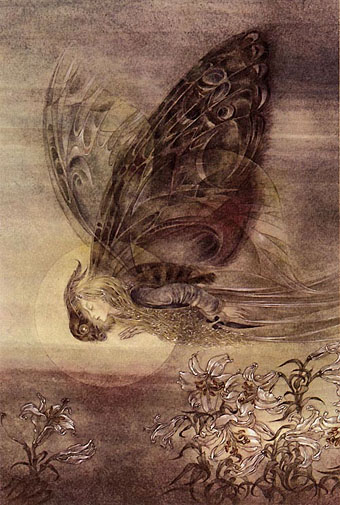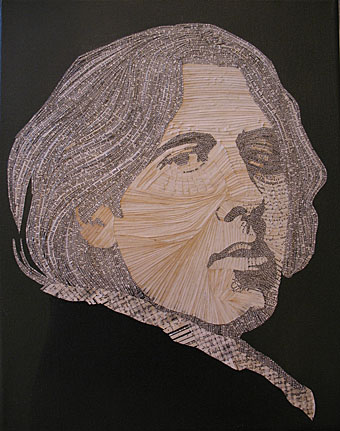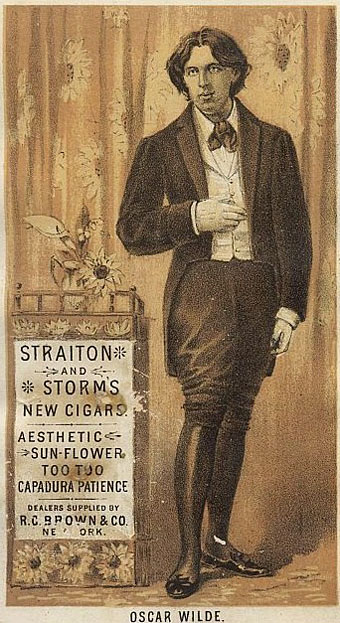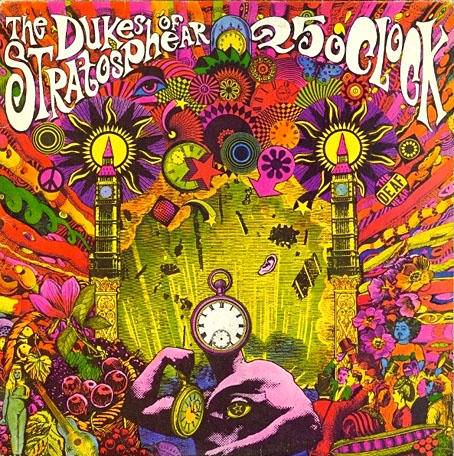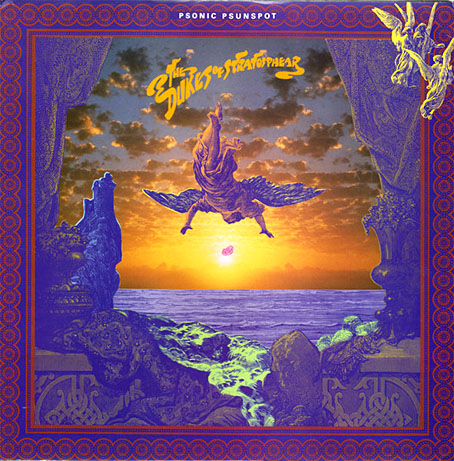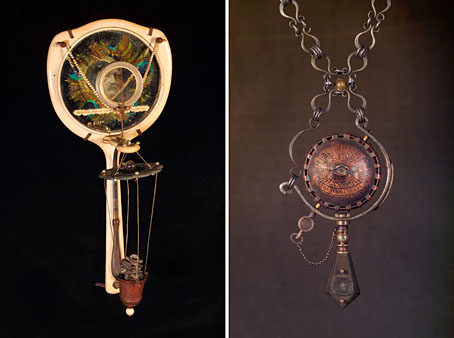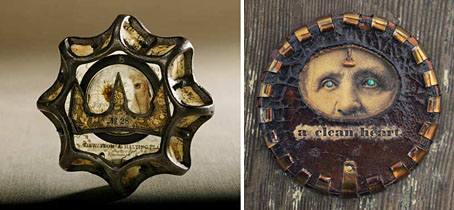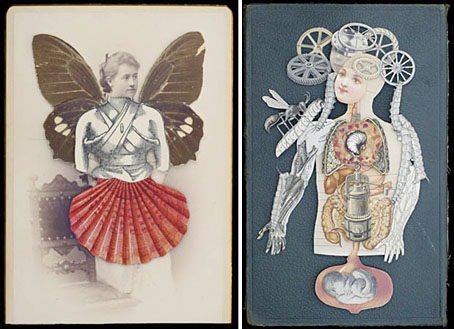Transfiguration (1952) by Sulamith Wülfing.
• Observatory posted photos of its Lovecraft art exhibition; see if you can spot my pics. Related: Write Club has more photos. Also, A Word From Our Sponsor.
• Taking the broooooaaaaad view of things: A Conversation with James Grauerholz on William S. Burroughs and Magick. Related: Beat Memories—The Photographs of Allen Ginsberg.
• Adam Curtis on BP and the Axis of Evil; how the the Anglo-Iranian Oil Company became British Petroleum and helped give Iran over to the Ayatollahs.
• The Quietus interviews Peter Christopherson (TG, Coil, etc) and Dr John.
• The Strange World of Adolf Hoffmeister at A Journey Round My Skull.
• An Artists’ Dialogue On CocoRosie’s Grey Oceans at Stereogum.
• Werner Herzog and David Lynch combine their talents.
• Jon Savage on The Residents versus The Beatles.
• BUTT magazine interviews James Bidgood.
• The Daily Drop Cap.
• The Gay Rub.

